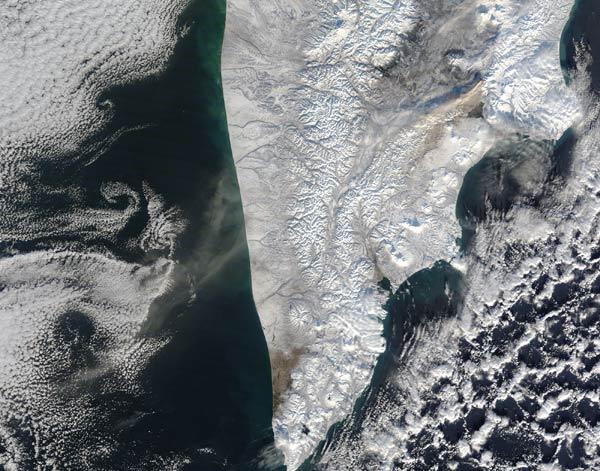
Russian Volcano Sends Up Steamy Plume

Kizimen Volcano, a steep, cone-shaped peak on the Kamchatka Peninsula in Russia's Far East, sent forth a diaphanous plume of steam and ash this week.
A NASA satellite captured this real-color image of the volcano's plume on Thursday (Dec. 30). The volcano itself is marked by a tiny red dot toward the upper-right corner of the picture; the cloudy, brownish plume stretches to the southwest across the peninsula, and is most visible as it blows out over the Sea of Okhotsk, on the left side of the image.
Kizimen Volcano last erupted in Dec., 1927 through Jan., 1928. The 7,800-foot (2,376-meter) mountain formed during four eruptive cycles beginning about 12,000 years ago. It is one of many volcanoes strewn across Kamchatka's wild and isolated expanse.
Kamchatka's smoldering peaks are a part of the Pacific Ring of Fire intermittent chains of volcanoes that encircle the Pacific Ocean. Over the last 6 million years or more, the area has experienced more explosive eruptions than any other region on Earth.
Sign up for the Live Science daily newsletter now
Get the world’s most fascinating discoveries delivered straight to your inbox.









